What Is Lightweight Concrete?
Important Point
It can be defined as a type of concrete that includes an expanding agent that increases the volume of the mixture while giving additional qualities such as nailability and lessened the dead weight. The main specialties of lightweight concrete are its low density and thermal conductivity.
Lightweight Aggregate Concrete:
Lightweight Aggregate Concrete is prepared using lightweight aggregates or low-density materials such as volcanic pumice, clay, slate, shale, scoria, tuff, and pellite.
Concrete is considered to be Lightweight Aggregate Concrete if the density is not more than 2200 kg/m3, compared to standard concrete which is 2300-2400 kg/m3 and a proportion of the aggregate, should have a density of less than 2000 kg/m3.
How much does Concrete Weigh?
A cubic foot of broken concrete weighs 75 pounds, this weight comes from the weight of fine and coarse aggregates mixed with the cement.
Weight of Concrete per Cubic Foot:
Weight of solid concrete per Cubic Foot is 150 pounds per cubic foot.
Normal Weight of Concrete:
A normal concrete can weigh between 140 to 150 Lbs/ft³ due to the presence of heavier aggregates in the natural state.
Weight of Lightweight Aggregate Concrete:
- The lightweight concrete weight is typically around 115 pounds per cubic foot, compared to the average concrete weight of 145 pounds per cubic foot.
- The low weight of the lightweight concrete is due to the use of lightweight fine and coarse aggregate. When the complete aggregate is replaced with lightweight aggregate, the weight reduces the concrete density by approx. 10 pounds per cubic meter.
- For example, a concrete slab of 1 square foot of 1.5 inches thick, standard concrete weighs 18 pounds. The same section made of Lightweight Aggregate Concrete weighs approx. 14.5 pounds.
Density of Lightweight Concrete:
- In the construction site, the fresh density of Lightweight concrete is a function of a proportionate mixture of air content, water retention, particle density, and moisture for Lightweight Concrete.
- ACI 213 specification of structural grade Lightweight Concrete states that an equilibrium dry density of Lightweight Concrete ranges from between 90 to 115 lb/ft³.
- Studies have shown that high quality of Lightweight Concrete absorbs very little water and thus retains its low-density content.
Properties of Lightweight Concrete:
The properties of light weight concrete are diverse and include low density and thermal conductivity, among others listed below.
- The shape of the aggregates that are used in Lightweight Concrete may have a cubical, rounded, angular, or irregular shape.
- Textures of Lightweight Concrete may range from a very fine pore, very smooth skins to very irregular surfaces with large exposed pores.
- The shape of the particles and the texture of Lightweight Concrete can directly affect the workability, ratio of coarse to fine aggregate, the cement content requirements, and the demand for water in concrete mixtures.
- Compressive strength levels that are commonly required by the construction site for designing of cast-in-place, precast, or prestressed concrete is around 3,000 to 5,000 psi which can be easily obtained with Lightweight Concrete.
- The permeability of light-weight concrete was much lower and was generally equal to or significantly lower than reported by standard weight concrete.
- Aggregates batched with a high degree of saturation can be replaced by standard weight aggregates to provide internal curing in Lightweight Concrete which contains a high volume of cementitious materials.
- The reason is the better hydration of the cement part provided by the moisture found from the slowly released reservoir of water absorbed within the pores of the lightweight aggregates.
- The thermal conductivity of concrete depends largely on its density and moisture content but also on the size and distribution of pores, the chemical composition of solid components, and the internal structure of lightweight concrete.
- Since light concrete, or lightweight concrete, is relatively low in density and the moisture content is high due to the pores, the thermal conductivity of this concrete is less than that of conventional concrete.
- When tested in accordance with ASTM E 119 procedures, structural lightweight concrete slabs, walls, and beams have shown a greater fire tolerance period than members of equal size made of concrete containing standard aggregates.
Useful Article for You
- What Is a Contour Interval
- What Is Tile
- What Is the Difference Between a Shower Pan and a Shower Base?
- What Is a Window Panel
- Type of Arch
- What Is a Frame Structure
- What Is the Measurement for a Queen Size Bed
- What Is Considered Livable Space
- What Is One Way You Can Save Electricity?
- What Is Mdf Mean
- What Is a Bundle of Shingles
- What Is a Gallon of Water Weigh
- What Is SuperelevationWhat Is Overhang
- What Is Sand Blasting
- What Is a Span Bridge
- What Is the Little Black Diamond on a Tape Measure
- What Is a Louvered Door
- What Is a Spread Footing
- What Is Leveling
- Different Types of Beam
- What Is Pedestal
- What Is Plumbing Fixtures
- What Is Slab Construction
- What Is Calacatta Quartz
- What Is Auxiliary View
- Sheepsfoot Roller
- Live Load Vs Dead Load
- What Is 1 Flight of Stairs
- What Is Refractory Cement
- Dry Pack Concrete
- What Is Luminous Flux Vs Lumens
- What Is a Frost Wall
- What Is an Undercoat
- What Is Road Pavement
- Arch Foundation
- What Is a Stair Landing
- What Is Stone Masonry
- What Is a Spandrel Beam
- What Is Pier and Beam Foundation
- What Is Levelling
- What Is a Pile Cap
- What Is a Mat Foundation
- What Is a Floating Slab
- What Is the Purpose of Foundation
- What Is Modulus of Rupture
- What Is a Flush Door
- What Is Residential Construction
- What Is the Best Foundation for a House
- What Is a Benchmark in Surveying
- What Is a Engineering Drawing
- What Is an Admixture
- What Is a Monolithic Slab Foundation
- What Is the Standard Size Water Supply Line
- What Is the Difference Between Tension and Compression?
- What Is a Tremie
- What Is Tributary Area
- What Is Shoring Construction
- What Is a Cason
- What Is Wall Putty
- What Is the Difference Between Mortar and Concrete
- What Is Bhk
- What Is Sbc of Soil
- What Is Plinth Level
- What Is Water Proofing
- What Is Mix Design of Concrete
- What Is Fine Aggregate
- What Is Retention Money
- What Is Design Mix
- What Is Isometric Scale
- What Is Development Length
- What Is Superelevation
- What Is Wall Made Of
- What Is Micro Piling
- What Is Soil Stack
- What Is a Half Wall Called
- What Is Flagstone
- What Is a Cinder Block
- What Is Floors
- What Is a Parapet in Construction
- What Is Concept Drawing
- What Is a 30 Degree Angle
- What Is a Mezzanine Level
- What Is Plinth Area
- What Is Precipitation
- What Is a Soffit
- What Is the Difference Between Residual and Transported Soil
- What Is a Drop Manhole
- What Is Oblique View
- What Is a Flyover Bridge
- What Is Tie Beam
Uses of Lightweight Aggregate Concrete:
The uses of light weight concrete are varied and include applications such as screeds and reinforcement for general purposes.
- Lightweight Aggregate Concrete are used as screeds and reinforcement for general purposes especially when screeds or similar thickening and the weight to the floor, roof, and other structural members of the building.
- Lightweight Aggregate Concrete is used as Screeds and walls where the timber has to be attached by nailing.
- Lightweight Aggregate Concrete is used as casting structural steel to protect against fire and corrosion or as a covering for construction purposes.
- Lightweight Aggregate Concrete is used as heat insulation on the roof.
- Lightweight Aggregate Concrete is used for insulating the water pipes.
- Lightweight Aggregate Concrete is used for the construction of partition walls and panel walls in frame structures.
- Lightweight Aggregate Concrete is used for brick fixing to get nails from joinery, especially in the construction of a home or domestic type construction.
- Lightweight Aggregate Concrete is used as typical wall insulation.
- Lightweight Aggregate Concrete is used for surface rendered for exterior walls of small houses.
- Lightweight Aggregate Concrete is also being used for reinforced concrete.
Advantages of Lightweight Concrete:
The following are the Advantages of Lightweight Concrete.
- One of the advantages of light weight concrete is that it reduces the dead loads, resulting in savings in foundations and reinforcement.
- Lightweight Concrete improves the thermal properties of a building.
- Lightweight Concrete improves the fire resistance of a building.
- Lightweight Concrete saves transportation and managing of precast units on site.
- Lightweight Concrete reduces the formwork and propping.
Useful Article for You
- Zero Force Members
- How Much Does a Yard of Concrete Weigh
- Cmu Wall Meaning
- Gradient Road
- Budget Sunroom Ideas
- What Is Gypsum Board
- Types of Vaulted Ceilings
- Well Points
- How Does Baking Soda Remove Blood from Carpet
- What Are Forms in Construction
- How Heavy Is Dirt
- Tender Meaning in Architecture
- Dark Olive Green House
- Cast in Place Concrete
- Lean to Roof
- How Tall Is an Average Door
- Grade Beam Foundation
- Window Sill Height
- Concrete Cold Joint
- Types of Traps
- Types of Pipe
- Wood Supporting Beams
- Finishing Plaster
- Home Depot Scrap Wood
- Lvl Beam Size Calculator
- Structural Shell
- Curb Types
- Msand
- Rcc Work Rate Per Sq Ft
- Optimum Dry Meaning
- Disadvantages of Low-E Glass
- Bridge Abutment Definition
- Build Materials List
- Composite Masonry Wall
- Is Cedar a Hardwood or Softwood
- Modified Proctor Test
- Physical Properties of Sand
- Crane Machine Construction
- Types of Gable Roofs
- Door Frame Types
- How Much Does 55 Gallons of Oil Weigh
- Dog Leg Stairs
- Concrete Salt Finish
- Westpoint Bridge Builders
- Types of Porches
- Hempcrete Disadvantages
- Roof Pitch Types
- Types of Weirs
- Asphalt Floor
- Dutch Roof
- #6 Rebar Weight Per Foot
- Prizmatic Compass
- Bond Break Concrete
- Poured Concrete Wall Cost Calculator
- How Many 60 Lb Bags of Concrete in a Yard
- Wood Fence Post Spacing Chart
- Falsework
- Design of Building Structures
- Topping Slab
- Types of Cinder Blocks
- Fresh Concrete
- Door Colors for Red Brick House
- Clear Cover Concrete
- Tiles Brand
- Cement Consumption in Plaster
- Aggregate Density Kg M3
- Weight of Concrete Slab Calculator
- Is Clay Smaller Than Silt
- How to Calculate Dead Load
- Bad Concrete Work
- Stepped Foundations
- Residential Construction Cost Estimator Excel
- Different Construction Trucks
- Septic Pump Replacement Cost
- Dead Load Calculator
- Beam Vs Column
- Concrete Mix Ratio
- Caisson Foundation
- Glulam Beam Weight Calculator
- Bituminous Pavement
Disadvantages of Lightweight Concrete:
A notable liteblock disadvantage is that the depth of carbonation. that is, the depth at which corrosion can occur within the right conditions is almost twice that of conventional concrete.
Therefore, special care will need to be taken to provide adequate coverage to the reinforcement of the lightweight structures to grant protection against corrosion.
Lightweight Concrete Vs Conventional Concrete:
When considering lightweight concrete vs normal weight concrete, several differences emerge
- The weight of Lightweight Concrete is 20 to 115 pounds per cubic foot whereas the weight of Conventional Concrete is 130 to 150 pounds per cubic foot.
- The compressive strength of Lightweight Concrete is 7000 psi whereas the compressive strength of Conventional Concrete is 8000 psi.
- The modulus of Elasticity for Lightweight Concrete is 65000 psi for the ultra lightweight concrete, 3 million psi for the medium-lightweight concrete, where as the modulus of Elasticity is 2 to 6 million psi for the Conventional Concrete.
- The shrinkage of the aggregates of light weight concrete are, Perilite 0.1 to 0.2 %, Vermiculite 0.1 to 0.7 %, Slag 0.04 to 0.06 %, Slate and Clay 0.02 to 0.08 %, where as the shrinkage of the aggregates of conventional Concrete is around 0.04 to 0.08 %.
- The thermal conductivity of the aggregates of lightweight concrete is Perlite 0.1 to 0.2 %, Vermiculite 0.1 to 0.7 %, Slag 0.04 to 0.06 %, Slate and Clay 0.02 to 0.08 % BTU per hour per square foot per degree F, per inch, whereas the thermal conductivity of the aggregates of conventional Concrete is sand and gravel ranges from 8 to 12 %.
- The fire resistance for lightweight Concrete is a 4-hour rating for 4.5-inch slabs with lightweight concrete, whereas the fire resistance is a 3-hour rating for 6-inch slabs made of trap rock, crushed limestone, and gravel aggregates used in conventional Concrete.
Properties of Lightweight Concrete:
Lightweight concretes can be produced with an over-dry density range of approximately 300 to a maximum of 2000 kg/m(3), with corresponding cube strengths from approximately 1 to over 60 MPa and thermal conductivities of 0.2 to 1.0 W/mK.
Lightweight Aggregate Concrete:
Lightweight aggregate is a type of coarse aggregate that is used in the production of lightweight concrete products such as concrete block, structural concrete, and pavement. The expanded material has properties similar to natural aggregate, but is less dense and therefore yields a lighter concrete product.
How Much Does Concrete Weight?
A solid slab of concrete weighs 150 pounds per cubic foot. A cubic foot of broken concrete weighs 75 pounds.
Weight of Concrete Per Cubic Foot:
A solid slab of concrete weighs 150 pounds per cubic foot. A cubic foot of broken concrete weighs 75 pounds.
Weight of Concrete Per Cubic Foot:
A solid slab of concrete weighs 150 pounds per cubic foot. A cubic foot of broken concrete weighs 75 pounds.
Normal Weight of Concrete:
As mentioned earlier, normal concrete can weigh between 140 to 150 Lbs/ft³ due to the presence of denser aggregates in their natural state.
Uses of Lightweight Aggregate Concrete:
Lightweight aggregate concrete can be used for the construction of partition walls and panel walls in frame structures. It can be used to create general insulation of walls. It is also used to get surface rendered for external walls of small houses. It can be used for reinforced concrete.
Weight of Lightweight Aggregate Concrete:
The weight of the lightweight aggregate concrete is around 115 pounds per cubic foot, whereas the weight of the normal weight concrete is 145 pounds per cubic foot.
Advantages of Lightweight Concrete:
- The light weight concrete advantages are numerous, including a reduction in dead loads which can result in savings in foundations and reinforcement.
- Improved thermal properties.
- Improved fire resistance.
- Savings in transporting and handling precast units on site.
- Reduction in formwork and propping.
Disadvantages of Lightweight Concrete:
The only drawback of lightweight concrete is that the depth of carbonation i.e. the depth within which corrosion can occur under suitable conditions is nearly twice than that of normal concrete.
Density of Lightweight Concrete:
To define light weight concrete, it can be classed according to its unit weight or density, which normally ranges from 320 to 1920 kg/m3, according to the ACI Committee 213 Guide for Structural Lightweight Aggregate Concrete (ACI 213, 2001).
Difference Between Lightweight Concrete and Conventional Concrete:
The light weight concrete definition encompasses a mixture made with lightweight coarse aggregates such as shale, clay, or slate, which give it its characteristic low density. Structural lightweight concrete has an in-place density of 90 to 115 lb/ft³, whereas the density of regular weight concrete ranges from 140 to 150 lb/ft³.
Lite Weight Concrete
Lightweight concrete is a mixture made with lightweight coarse aggregates such as shale, clay, or slate, which give it its characteristic low density. Structural lightweight concrete has an in-place density of 90 to 115 lb/ft³, whereas the density of regular weight concrete ranges from 140 to 150 lb/ft³.
Like this post? Share it with your friends!
Suggested Read –
- Density Vs Unit Weight
- What Are the Disadvantages of Epoxy Flooring?
- Civil Engineering Software | List of Civil Engineering Software | List of Engineering Software
- What Is Sewerage System | Types of Sewerage System | Why We Need a Partially Separate System | How Does a Sewage Treatment Plant Work
- What Is Kelly Ball Test | Test Procedure of Kelly Ball Test | Use of the Kelly Ball | Advantages of Kelly Ball Test | Disadvantages of Kelly Ball Test
- 9 Types of Curing | What Is Curing of Concrete | Why Curing Is Important | Minimum Curing Period for Concrete Cement | How Long Does It Take for Concrete to Dry
- What Is Micropile | Types of Micropile | Common Uses of Micropile | Advantages & Disadvantages of Micropiles | Micropile Vs Typical Pile | How Are Micropiles Installed
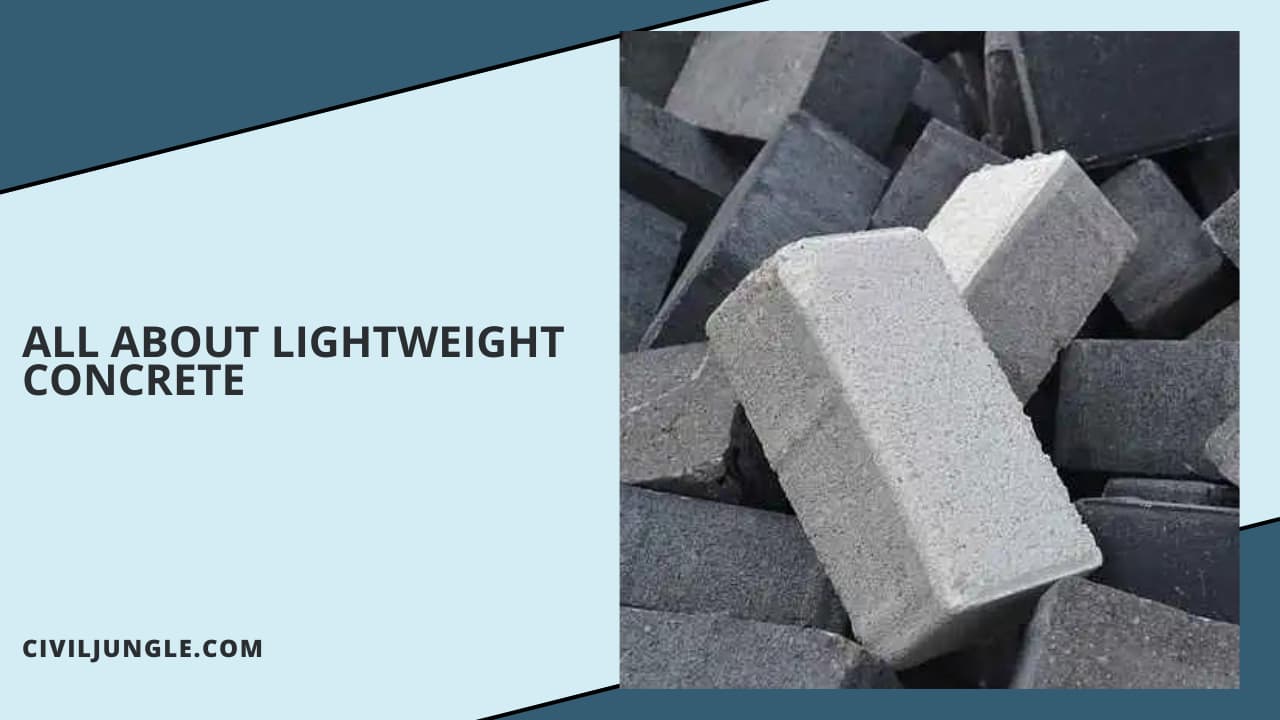
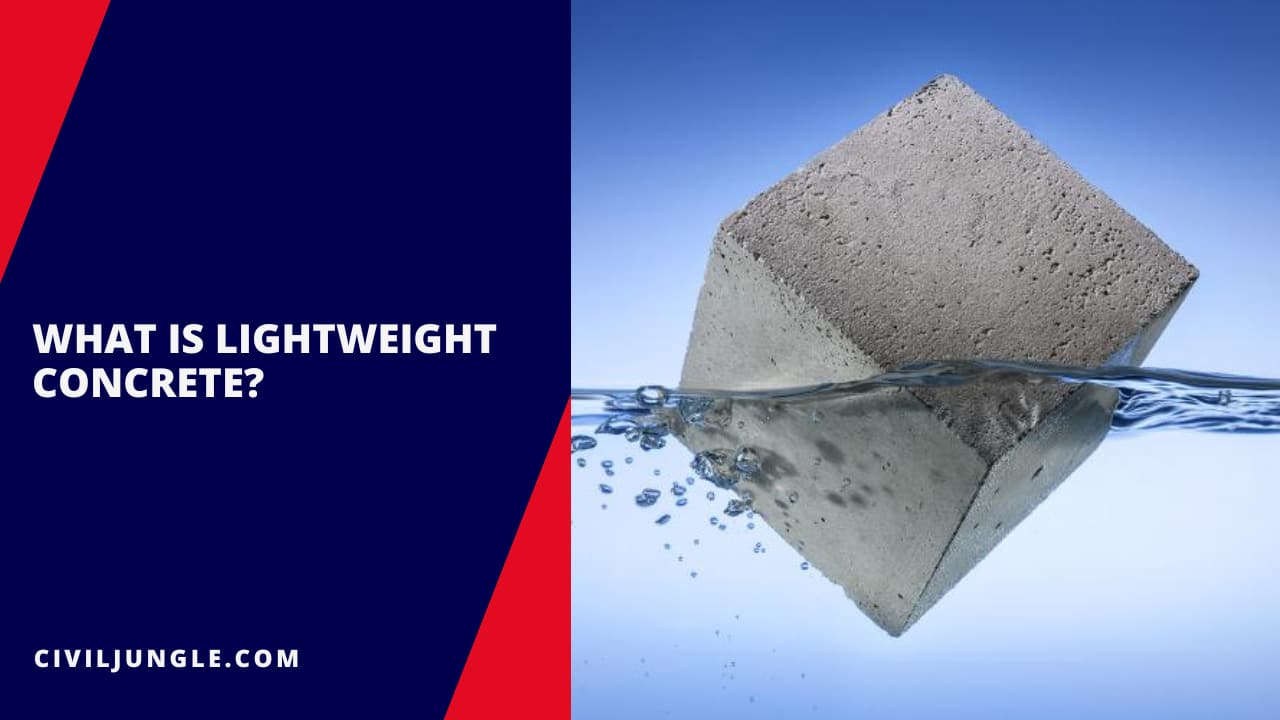
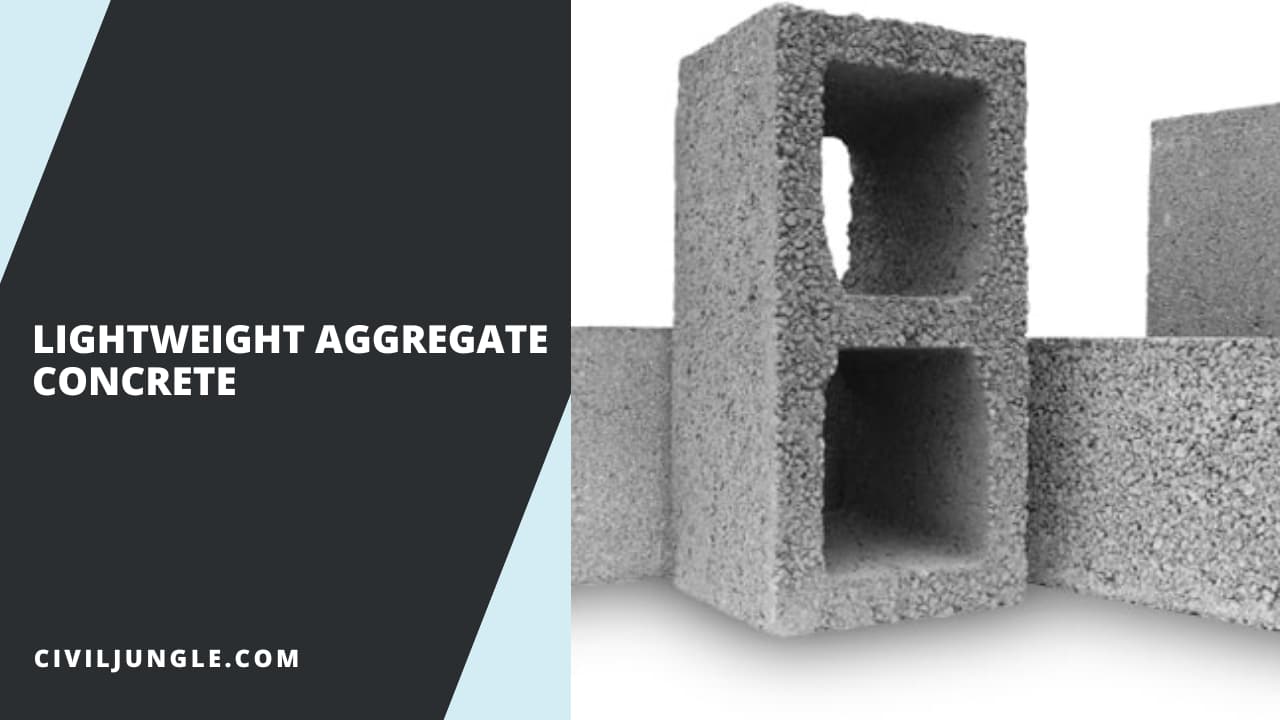
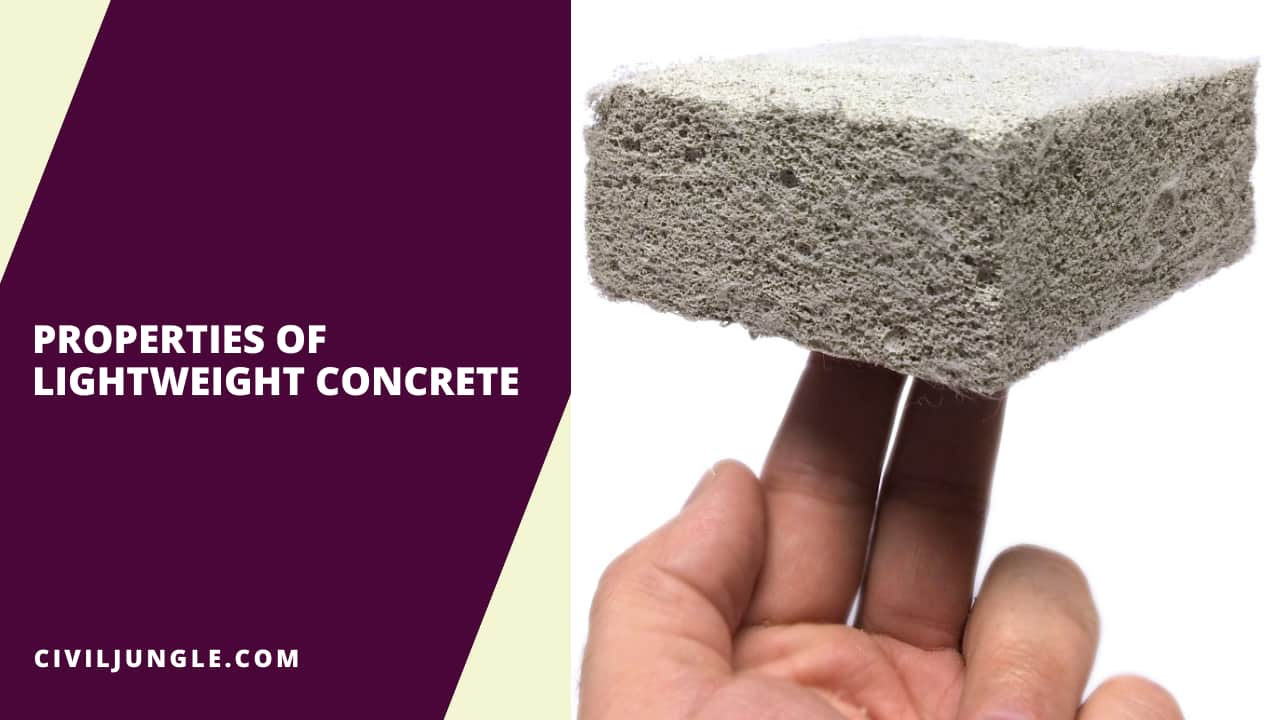

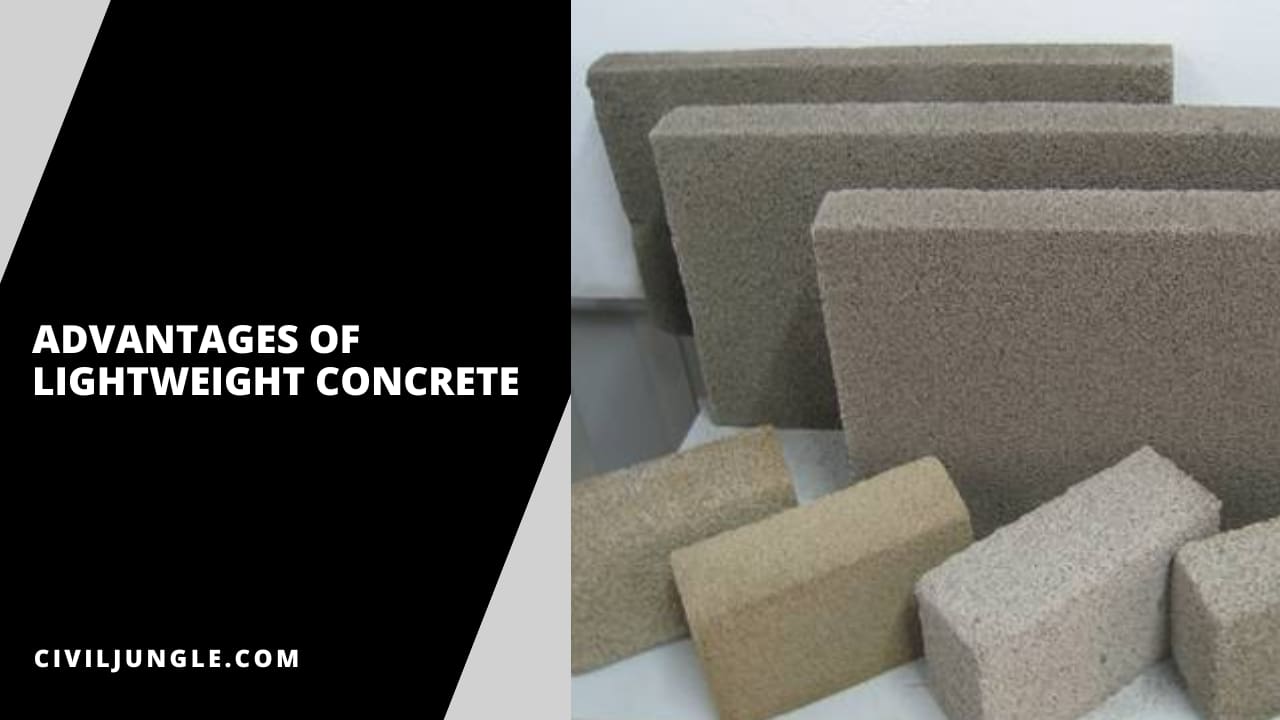
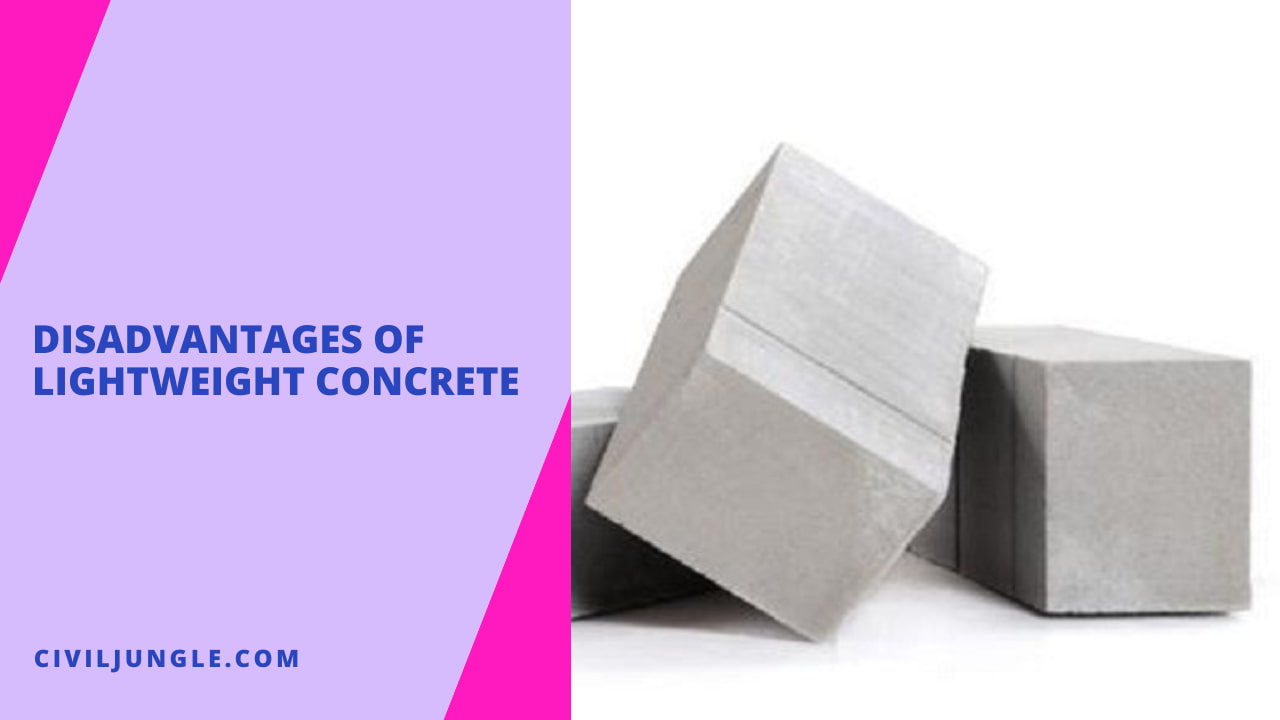
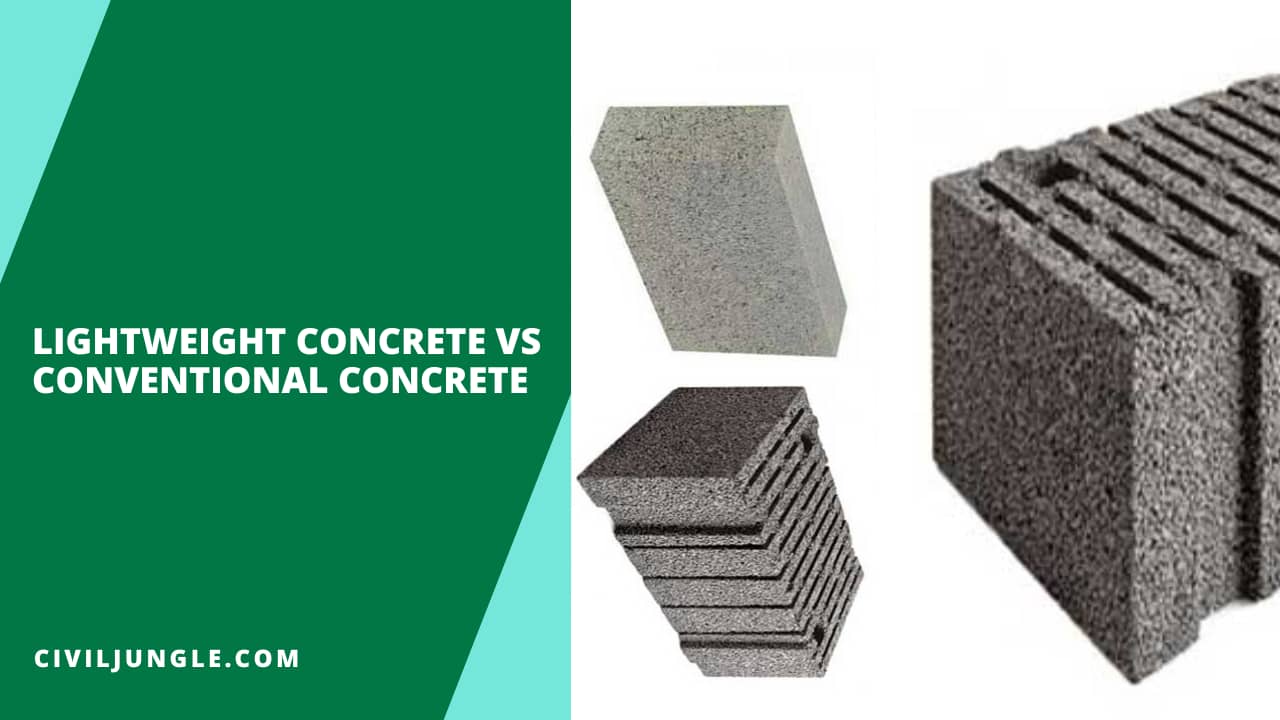

Leave a Reply